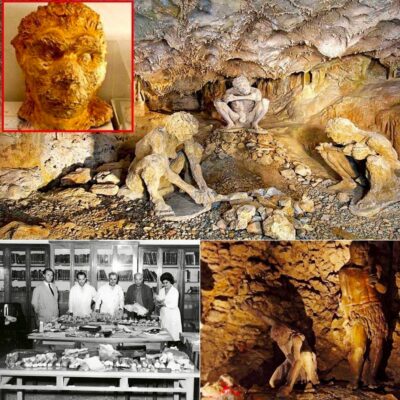A 24-year-old noble woman gave birth to a fetus in a coffin more than a thousand years ago, discovered and excavated in her family crypt.
A seemingly horror story true to the spirit of “Buried Alive” (Buried Alive) by Edgar Allan Poe. Archaeologists from the University of Oulu, Finland recently discovered an ancient chapel in the Vihti community in Southern Finland. The building was built in 1785 and was once the crypt of the aristocratic Toll family. Burials were carried out here from 1785 to 1829. The remains found by scientists were examined by scientists as that of a 24-year-old woman, one of eight members of the family. The ‘nightmare’ is a woman who gave birth to a fetus right in the coffin that was buried.

As was common practice in the early 19th century, her body was embalmed and buried five and a half months after her death.
She was Charlotte Bjornram, married a resident of Vihti named Karl Henrik Tall and died on October 23, 1808 at the age of 24 from some illness. As was common practice in the early 19th century, her body was embalmed and buried five and a half months after her death.
In Charlotte’s ovary, archaeologists found a fetus coming out. By measuring the length of the fetus, scientists concluded that Charlotte was 6 months pregnant.
Birth child in a coffin
“Birth children in a coffin” or “birth children after death” is an extremely rare case, but not unique. That’s because during the decomposition process, gases that accumulate in the abdomen will push the fetus out. And, perhaps, we should be glad that our ancestors knew so little about this process because their lives at that time were already filled with worries and superstitions.

Skeleton of an Italian woman of the 7th-8th centuries.
For example, in 2018, Italian archaeologists unearthed the body of a woman who lived in the 7th-8th centuries. She suffered from serious complications of pregnancy, extremely high blood pressure, and even had to undergo long treatment, which did not help. In the end this woman died and along with the fetus was “born” in the grave, as in the case of Charlotte Bjornram at about 6 months old.


Bones are used to determine the age of the fetus.
Another earliest recorded case occurred in 1551, when a pregnant woman was hanged by the Spanish Inquisition, and two dead fetuses ‘fell out’ 39; from her body four hours after the execution. In this case, we are hardly talking about accumulated gas, rather a convulsive reaction leading to “after birth”.
The last known incident occurred in 2005 in Hamburg, when a 34-year-old woman died of a heroin overdose in her apartment several days later “birth hatching after death”. An autopsy revealed that both the fetus and mother were dead.











